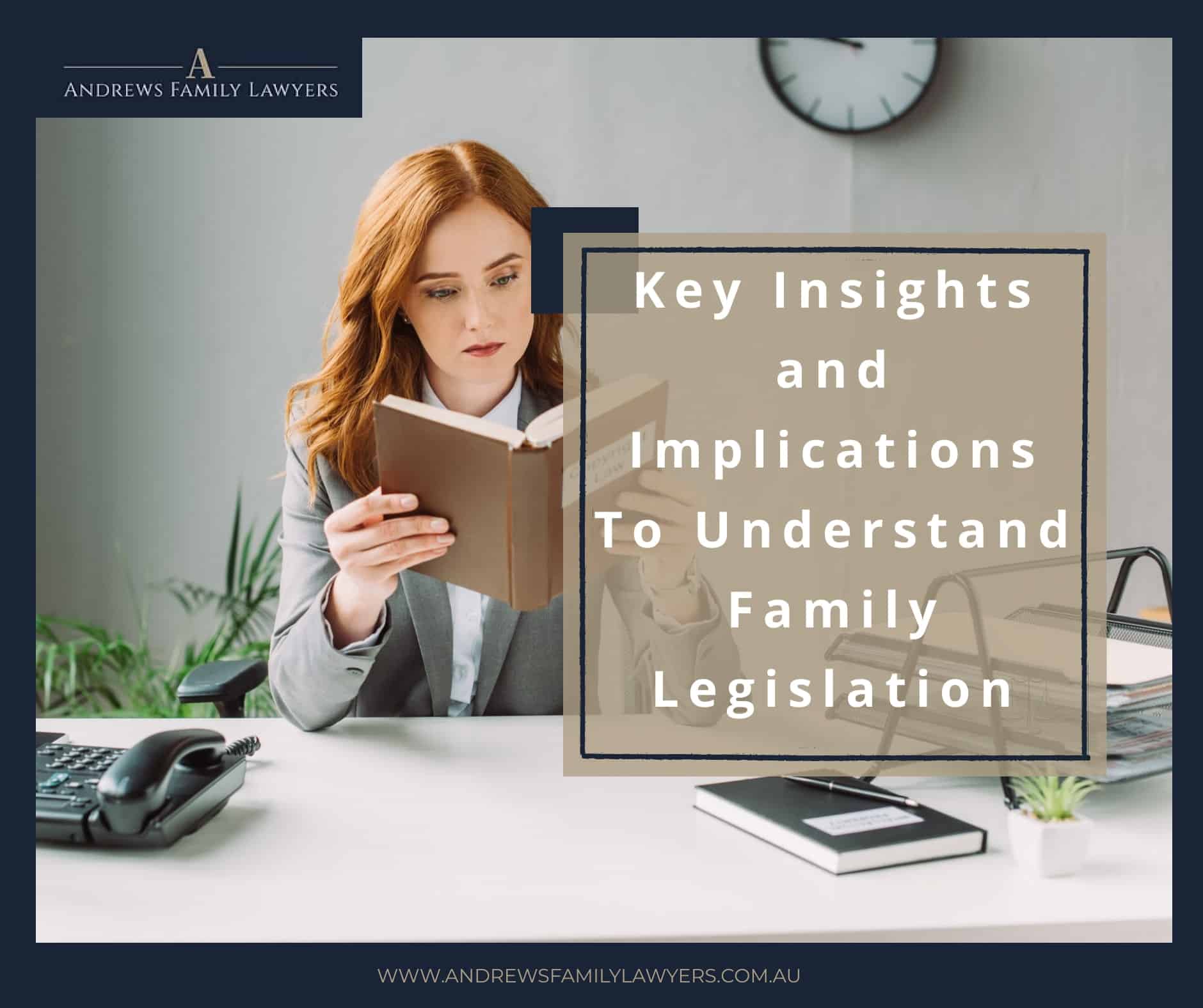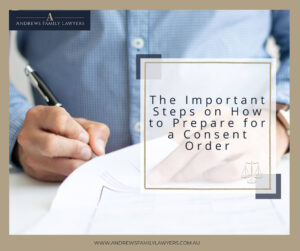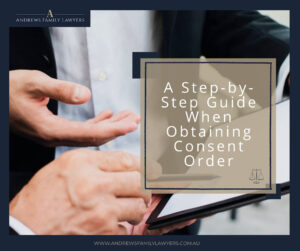Family law is a broad field governed by several different pieces of Commonwealth legislation. If you’re going through a family law issue, it’s likely that you’ll be dealing with multiple laws in family court. Understanding how these laws affect your case is crucial to effectively approaching legal concerns. In this article, we’ll explore relevant family legislation, its impact on cases, and how our team works with you to achieve the best possible outcome.
Key Takeaways
- Australia uses no-fault divorce with residency eligibility requirements.
- Binding financial agreements don’t require court intervention after parties receive legal advice. The Court uses a four-step process to determine property orders.
- Parenting matters cover living arrangements and long-term decision-making, including parental responsibility.
- Family violence is a serious concern that’s covered by the Domestic and Family Violence Protection Act.
- Child support is managed by Services Australia through the Child Support (Assessment) Act, the applicable law governing how parents support their child financially.
Divorce
What the Law Says on Family Legislation
Divorce is defined and enforced through the Family Law Act 1975. Australian law uses a no-fault framework for divorce, meaning that the parties aren’t required to prove wrongdoing to end the marriage or de facto relationship. All that’s required is the recognition that the relationship has broken down irretrievably.
In cases involving children, the Court considers parental responsibility and may implement parenting arrangements that prioritise the best interests of the child. This includes special consideration for Torres Strait Islander children, ensuring their cultural needs are acknowledged. Where safety concerns arise, family violence orders may be relevant, and orders made by the Court can also address shared parental responsibility between parties. The legal process aims to balance fairness with protecting the child’s wellbeing and upholding the rights and responsibilities of each parent.
Eligibility
Family law expects parties seeking a divorce to have a connection to Australia. The Family Law Act establishes that at least one party to the divorce should:
- Be an Australian citizen, or
- Have resided in Australia for at least the last 12 months and intend to continue that residence.
If you’re not a citizen, you’ll need to provide evidence of your residence. This evidence could be a passport showing your date of arrival, or visa documentation.
Marriage Certificate
Divorce applicants must attach their marriage certificate to the application. The Registry of Births, Deaths and Marriages can provide a replacement if needed. If the certificate is in a language other than English, it must be translated by a NAATI-accredited translator. In separated families, providing accurate documentation is vital, especially where child-related orders may follow. These orders can include arrangements for parenting, recovery orders if a child is taken without consent, and decisions affecting the other parent and their parental rights.
General provisions under the Family Law Act guide how such matters are handled, including the involvement of family services to support outcomes in the best interests of the child. Special consideration is given to Torres Strait Islander children, ensuring cultural needs are respected. Divorce proceedings may also interact with family violence orders where safety concerns exist, with family services offering further assistance in such cases.
Separation
Couples must live separate lives for at least 12 months and one day before they can pursue a divorce. The reason for this is that family law seeks to preserve marriages wherever possible. The law permits couples to keep cohabiting to reduce financial burden. The legal term for this is “separated under one roof”. The incidence of this arrangement has been increasing year by year.
The Federal Circuit and Family Court of Australia must be satisfied that you have lived separate lives while cohabiting. In order to meet this requirement, we recommend keeping a written record of factors, such as:
- Separate sleeping arrangements
- Separation of domestic duties
- Payment of utilities
- Childcare arrangements
Family dispute resolution may help address concerns arising from separation before formal legal steps are taken. It can also identify and manage any risks of child abuse during or after separation.
Marriage Under Two Years
Divorce applicants who’ve been married for less than two years must attend marriage counselling before proceeding with their application. Similar to the separation period, this is to ensure that couples don’t rush into a divorce without due consideration. The couple will receive a counselling certificate showing they have completed this pre-action procedure. There are cases where the law allows an applicant to bypass this requirement, including:
- The party has invited their spouse to counselling, but the spouse doesn’t make themselves available.
- There are family violence concerns that would make counselling unsafe or inappropriate due to particular circumstances.

Financial Matters
We strongly recommend parties settle financial matters through legally enforceable arrangements, rather than informal agreements. The Family Law Act provides divorcing couples and those exiting a de facto relationship with different methods to divide assets. While spousal maintenance can be included in legally binding financial arrangements, child support is handled through a separate process. These financial matters often intersect with parenting arrangements and may be influenced by existing parenting orders or a court order.
For families leaving a de facto relationship, clear parenting arrangements are particularly important to support stability for young people involved. In some cases, the Court may issue a new court order to ensure the best interests of young people are protected. Where financial and parenting matters overlap, structured parenting arrangements and parenting orders can help avoid future disputes and ensure long-term wellbeing for young people.Binding Financial Agreement
Binding Financial Agreements (BFA) are a way for spouses to legally divide their assets without appealing to the Family Court. However, in particular circumstances—such as where child-related orders are in place or concerns arise about the long-term nature of care—BFAs may need to align with other legal considerations. These can include where the child lives, the role of the other parent, or the existence of recovery orders if one parent removes a child without consent.
If a party resides in an overseas jurisdiction, this may complicate enforcement. Family services may assist in resolving such complexities, especially where compliance with the Criminal Code becomes relevant. It’s also important that BFAs do not override parental responsibilities or conflict with orders already made by the Court.
In some cases, support from family services may be necessary to ensure that BFAs are fair, lawful, and serve the best interests of the child. Instead, the parties must meet the following criteria:
- Receive independent legal advice
- Sign the financial agreement in the presence of their lawyer
- Receive a Certificate of Independent Legal Advice
The legal implications of a BFA make them appropriate for some property settlements more than others. Here are some of our recommendations:
- Asset pool size. BFAs are generally a more expensive form of settlement. For this reason, they are more suitable for larger asset pools
- Financial complexity. Property pools with complex asset structures can benefit from BFAs. Without court oversight, parties have greater flexibility over the agreement’s content
- Timing. Unlike court orders, BFAs can be entered into during a marriage as well as after separation
Property Order
Property orders are granted by the Court after the application has satisfied a four-step process derived from the Family Law Act. Those steps are as follows:
- The property pool is valued after a full financial disclosure by both parties
- Each Party’s financial and non-financial contributions to the marriage are considered
- Both parties’ future needs are weighed. This is based on factors such as health and future earning capacity
- The Court finally determines whether the orders are fair and equitable
Parenting Arrangements
Parenting matters cover two elements:
- Parental responsibility. Arrangements must cover decision-making on major long-term issues for the child’s wellbeing. These issues include the child’s education, healthcare, and religious and cultural upbringing
- Child’s living arrangements. Parents must organise the custody of the child. Custody could be shared jointly or fall to one parent primarily. These decisions are often influenced by the child’s best interests
Family dispute resolution plays a key role in helping parents agree on these arrangements outside of court. It is a critical part of resolving family law children matters before litigation.
Parents are encouraged to engage in multiple rounds of family dispute resolution where necessary to ensure the child’s voice and safety from child abuse are prioritised. These discussions often explore each parent’s view on religious and cultural upbringing and how that relates to the child’s best interests. Where agreement is reached, parenting arrangements may be formalised into parenting orders, particularly for families emerging from a marriage or de facto relationship.
These orders outline practical matters such as where the child lives, time spent with each parent, and who has parental responsibility. If no agreement is reached, the Court may issue parenting orders that allocate parental responsibility, either equally or solely, depending on the circumstances. Repeated parenting orders may be necessary to adjust to changing family dynamics while continuing to reflect the child’s best interests and ensure that all parties understand their ongoing parental responsibility.
Best Interests of the Child
Any decisions made by the Court concerning parenting must be based on the child’s best interests. The Family Law Act underwent significant changes in 2023 to refine how the Court establishes a child’s best interests. The Court considers the following six factors:
- What arrangements prevent exposure to child abuse
- The views of the child
- The child’s psychological, emotional, and cultural needs
- Each parent’s capacity to provide for the child’s needs
- What benefit the child will gain from having a relationship with each parent and any other family members
- Any other consideration the Court believes is relevant
- Decisions must consider the best interests of family law children in all parenting orders.
- These principles apply equally when separated parents create parenting plans or apply to the family court.
If there is a history or concern of child abuse, the court must take extra care in evaluating parenting capacity and determining parenting orders. Family dispute resolution professionals are trained to screen for abuse and support families in high-risk situations.
There are additional criteria for Aboriginal and Torres Strait Islander children. Parenting orders should factor in the child’s right to connect with their culture, community, and traditional language.
Child-Related Orders
Parenting orders can be entered into by consent or through litigation in Court. If separated parents can’t form an agreement, the Court can step in. Before attending court, co-parents must undergo family dispute resolution. If dispute resolution isn’t successful, the parents will receive a genuine steps certificate to allow them to proceed to court. Family dispute resolution practitioners are trained to address complex family dynamics and reduce the risk of harm to children.
Family dispute resolution is often required multiple times before litigation. The Federal Circuit and Family Court considers these efforts when determining outcomes.
Parents may need to meet with a family report writer as part of the litigation to determine the most suitable arrangements. Parenting orders issued by the court are enforceable and designed to serve the child’s best interests.
Parenting Plan
If the separated family’s relationship has a civil aspect, then they may organise parenting through an informal parenting plan. Previously, such plans could be registered under the Family Law Act. While that’s no longer possible, parenting plans must still cover the child’s developmental needs and living arrangements. Parenting plans should also consider the long term nature of the child’s needs and must align with parental responsibility.
Family dispute resolution can help separated parents draft parenting plans that reflect the child’s best interests while avoiding court. It is especially helpful in cases where there are disagreements around the child’s education or concerns about potential child abuse.
Domestic and Family Violence
Whether you’re married or in a de facto relationship, domestic violence is a serious legal issue that affects separated families, young people, and the broader community. The primary law covering family violence in Queensland is the Domestic and Family Violence Protection Act 2012. This legislation allows the Family Court to grant family violence orders and to consider the best interests of the child when making decisions.
These matters are closely linked to parental responsibility, especially where Torres Strait Islander children and other vulnerable groups are involved. The Court may issue or adjust parenting orders to safeguard a child’s developmental needs and overall wellbeing. Parenting arrangements can also be reviewed or altered in light of new safety concerns. There are three mechanisms available to protect children and other victims of family violence, including young people, and these often intersect with broader parental responsibility considerations and existing parenting orders.
Police Protection Notice
When police respond to a domestic violence situation, they have the power to issue a protection notice on the spot. These notices don’t require review by the Court and remain in force until a protection order can be arranged.
Final Protection Order
Final protection orders are granted by the Court once it’s satisfied that:
- The aggrieved and respondent are in a relevant relationship. This may include an intimate partner, informal carer, or a family member
- The respondent committed an act of domestic violence
- The order is necessary to protect the victim and protect children from further harm
All protection orders contain the same standard conditions. These conditions are the following:
- The respondent must maintain good behaviour toward everyone named in the order, and not commit further acts of domestic violence
- Any children and young people named on the order must not be exposed to family violence
The Court may include additional conditions if appropriate. Final protection orders are effective for five years from the date they’re issued, unless the Court determines otherwise
Temporary Protection Order
There are particular circumstances where the aggrieved may be in immediate danger. In these cases, the Court can issue a temporary order that’s in effect until the hearing to decide on a final order.
It’s a criminal offence for the respondent to breach a protection order at any time.
Child Support Services
Parents have the responsibility to provide for their child financially, which forms part of their broader parental responsibility. If a parent does not have caring responsibilities, they may be required to pay child support or even spousal maintenance in some cases. The applicable law is the Child Support (Assessment) Act 1989, which outlines formulas to calculate the costs each parent should take on, often based on the child’s living arrangements and ensuring decisions are made in the best interests of the child.
These arrangements must also support the child’s wellbeing and developmental needs. Services Australia is the government agency responsible for overseeing child support and related matters. There are two legally binding ways to organise child support: support services provided by Services Australia and private agreements. These agreements may be informed by a parenting plan, outcomes from family report writers, or existing parenting orders issued by the court.
Limited Child Support Agreement
A limited agreement is based on an assessment received from Services Australia. Services Australia makes an assessment based on three criteria:
- Each parent’s income and their combined income
- Each parent’s percentage of care for the child
- The child’s age
For parents with one assessment, there’s a simple 8-step formula to work out payments. The payments agreed to must be the same or more than the assessment calculated.
Binding Child Support Agreement
Parents can enter into a binding agreement with or without a child support assessment. The agreement can incorporate a payment amount that both parties are willing to agree to. In the absence of an assessment, each party must receive independent legal advice, similar to a BFA.
Such agreements may take into account the child’s views, cultural considerations relevant to Torres Strait Islander people, and any existing family studies or reports. Where necessary, arrangements may be made via video link if one party is in an overseas jurisdiction. These agreements do not affect parental rights, and do not prevent either parent from later seeking recovery orders if disputes arise. The other parent must still comply with any obligations under the Criminal Code, particularly in matters involving enforcement.
The agreement may permit changes if the child care arrangements change, or other circumstances arise that affect your agreement. This allows flexibility for significant changes in income or care needs.
Child Support Obligations
Regardless of what kind of agreement you enter into, the parties have particular obligations, which are the following:
- Payments must be made on time and in full
- Inform Services Australia of the care arrangements in place
- Lodge tax returns on time
- Report income accurately
- Tell Services Australia when your circumstances change
Child support payments can be made directly between parents. Alternatively, payments can be made to Services Australia, who will then transfer the money to the receiving parent.
These payments often relate to major long-term issues in a child’s life, such as education, health care, and general wellbeing—particularly for young people approaching adulthood. Ensuring consistency in support helps promote stability and meets the evolving needs of young people as they grow.
From Our Clients
“Excellent service, compassion and understanding. Peter ensured I was fully informed on procedures and requirements involved in my case. He is open and honest and had my best interests in the matter. I can highly recommend Peter”
– Katie Underwood
The team at Andrews Family Lawyers has extensive experience across all areas of family law. We treat every client with compassion and work to secure the best outcome.
Conclusion
There are various pieces of legislation that inform the field of family law. Understanding how those laws impact your case is crucial to making your path through the legal system as smooth as possible. The Family Law Act is the key legislation governing major family law areas. However, laws regarding issues such as child support and family violence are often relevant.
To ensure you get the best possible results, you need experienced legal representation. Andrews Family Lawyers can help you with a range of family law concerns. Contact us today.




